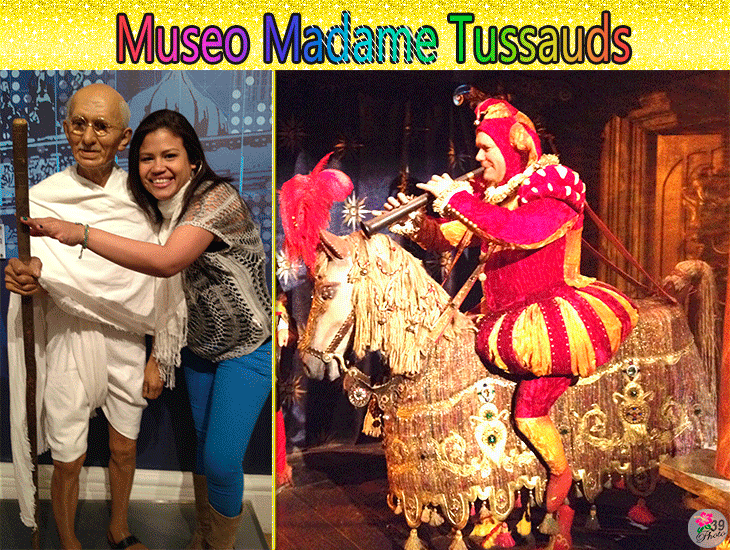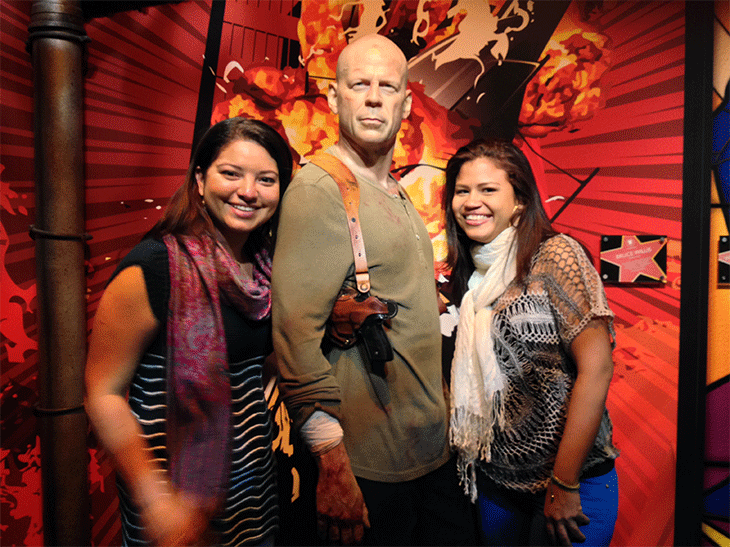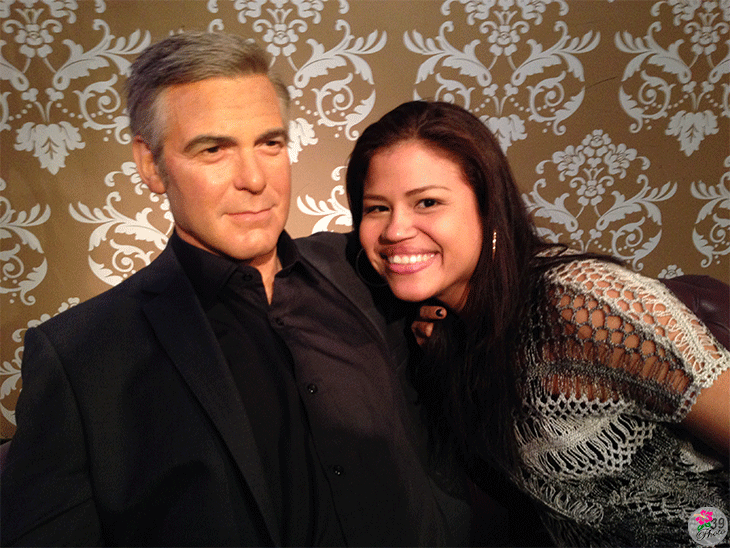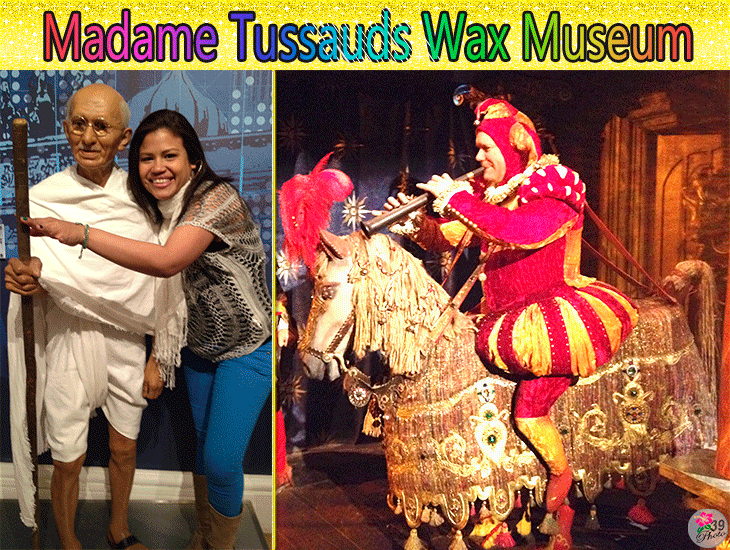Verdadera historia del museo de cera Marie Tussaud | True story of the Marie Tussaud's Wax Museum
04/12/2021
Por: @flores39
 Esculturas de cera policromadas | Londres, 2014
Esculturas de cera policromadas | Londres, 2014Desde tiempos imperiales el arte ha estado presente como elemento integral de las sociedades, es una manera de expresar sentimientos de atracción, alegrías, penas, rechazos o simplemente ridiculizar a una persona por su buena o mala experiencia de vida en el mundo político, económico, filosófico, artístico o de cualquier otro género. Esculpir estatuas de cera es un tipo de arte llamativo porque nos permite introducirnos en un mundo que busca emular la vida inmortalizando a sus actores, Madame Tussaud recorrió un espinoso camino para finalmente posicionarse como la escultora más famosa dentro de este ámbito artístico. Así que te invito a conocer cómo logró hacerlo.
Quién fue Marie Tussaud
Era el 1 de diciembre de 1761, en el interior de una modesta casa ubicada en la sureña ciudad francesa de Estrasburgo, el enérgico grito de una criatura rompe el silencio cuando la comadrona corta el cordón umbilical que le une a su joven madre Anne-Marie Walder. Ha nacido quien sería reconocida como Marie Tussaud, no ha gozado del abrazo y protección paterna porque nace en situación de orfandad, dos meses antes del alumbramiento el militar Joseph Grosholtz, padre de la niña, fue dado de baja en las líneas frontales contra el enemigo.
Los desagradables vientos de la guerra tocaron su angelical humanidad desde la vida intrauterina y después de ella. No fue nada fácil, la viuda de Grosholtz estaba consciente que la floreciente y conflictiva Europa atravesaba otro de sus acostumbrados eventos bélicos, en esta ocasión las principales potencias libran un feroz enfrentamiento desde 1756 por lograr el dominio global del mundo. A este evento internacional que cobró la vida de su esposo, se le conocería como La Guerra de los 7 años.
 Esculturas de cera policromadas | Londres, 2014
Esculturas de cera policromadas | Londres, 2014En medio de las escaramuzas y la falta de protección tras el fallecimiento de su esposo, la madre de Marie toma la decisión de viajar a Suiza y se asienta en la ciudad de Berna, donde consigue ser contratada por el médico e investigador Philippe Curtius (1737-1794), quien esculpía especímenes de cera simulando la anatomía humana para emplearla con fines pedagógicos en la escuela de medicina.
Pasaron los años y la niña Marie se encariñó con el doctor Curtius, quien le corresponde el afecto y sostienen una relación tío - sobrina; la niña se interesa por el arte de la cera y es así como se apropia del conocimiento que le catapultaría a la fama, no sin antes sufrir ciertos tropiezos.
De vuelta a Francia
Para 1770, el Dr. Curtius ha dejado de prestar sus servicios médicos y se encuentra dedicado a tiempo completo a la escultura de cera. Es invitado a presentar su primera exposición en París, siendo todo un éxito. Su fama le precedía, seis años más tarde su colección se encontraba en la galería del palacio real. Se movía entre la estirpe más alta de la época, su joven aprendiz ya era una talentosa adolescente que un año después se daría a conocer por haber esculpido los bustos de Voltaire, Rousseau y Benjamin Franklin.
En riesgo de perder su cabeza en la guillotina
Cuando estalla la Revolución Francesa en 1789, la suerte de Marie y su mentor cambian. Ambos se habían hecho de una considerable fortuna tallando la cera para esculpir notables personajes de la realeza y aristócratas monárquicos, esto era desfavorable en tiempos donde los seguidores y miembros del palacio real eran considerados traidores y enemigos; su castigo era perder su cabeza en la afilada guillotina pública.
 Esculturas de cera policromadas | Londres, 2014
Esculturas de cera policromadas | Londres, 2014A los 28 años de edad, Marie es acusada y condenada a muerte; su penosa suerte es perder la cabeza en la guillotina. Sin embargo, la habilidosa gestión de su mentor le salva la vida. Cuando se dan los eventos y cae la monarquía, el Dr. Curtius busca dar la vuelta a la tortilla, deja de moldear figuras alusivas a la monarquía y su alto mando para dedicarse a formar una colección renovada que tendrá como principales protagonistas a los líderes de la revolución. Esto le sirvió para negociar el indulto de su protegida.
Una macabra sustitución de la pena
Marie se le perdonó la vida sustituyendo su pena de muerte por la sangrienta tarea de crear bustos de cera con las cabezas de los condenados. De esta forma, el rey Luis XVI, su esposa María Antonieta, al igual que Jean-Paul Marat y Robespierre, entre muchas otras cabezas, fueron parte de la colección del terror.
El camino del éxito
En 1795 cuando las aguas parecían volver a la calma, se relaciona con el ingeniero François Tussaud, contrae matrimonio y al adoptar el apellido de su esposo, se convierte en Madame Tussaud; de su unión procrean dos hijos. Los vientos del terror revolucionario le sentaron mal a sus finanzas, estaba casi en la banca rota cuando en 1802, el productor de teatro alemán Paul Philidor le propone una asociación y viajar a Londres donde manejaba sus negocios. Las cosas no funcionaron y Madame Tussaud quiso independizarse.
 Esculturas de cera policromadas | Londres, 2014
Esculturas de cera policromadas | Londres, 2014Su esposo regresa a París y el matrimonio se disuelve, queda a cargo de su hijo mayor y mientras el hijo menor queda al cuidado paternal. Se propone realizar una ambiciosa gira teniendo en cuenta Inglaterra, Escocia e Irlanda. Las cosas empezaron a fluir mejor de lo que esperaba y las utilidades alcanzan para enviar suficiente dinero al papá de su hijo para la manutención y educación. No obstante, Monsieur Tussaud hace mal manejo económico y luego de rematar los bienes que poseían en Francia producto de la herencia que le dejó el Dr. Curtius a Marie; el hijo menor viaja a Londres para reunirse con su madre y hermano mayor.
El joven trabajaba bien la carpintería y se incorporó al negocio familiar para ayudar a su madre, cada quien aportaba lo suyo. El carpintero fabricaba extremidades que se incorporaban a las esculturas. De esta manera, se formó el museo de cera Marie Tussaud, la galería de exposición de cera más famosa del mundo. La noche del 16 de abril de 1850, teniendo 88 años de edad, esta luchadora artista de la cera abandona el plano físico. A pesar que en 1925 un incendio afectó su colección original y durante la Segunda Guerra Mundial se dañaron varios ejemplares, gran parte de su trabajo sigue intacto y se exhibe al público en Marylebone Rd, Londres, NW1 5LR, Reino Unido.

 Polychrome wax sculpture | London, 2014
Polychrome wax sculpture | London, 2014Since imperial times art has been present as an integral element of societies, it is a way of expressing feelings of attraction, joys, sorrows, rejections or simply ridiculing a person for his or her good or bad life experience in the political, economic, philosophical, artistic or any other genre. Sculpting wax statues is a striking type of art because it allows us to enter a world that seeks to emulate life by immortalizing its actors, Madame Tussaud traveled a thorny path to finally position herself as the most famous sculptor in this artistic field. So I invite you to learn how she managed to do it.
Who was Marie Tussaud
It was December 1, 1761, inside a modest house located in the southern French city of Strasbourg, the energetic cry of a baby breaks the silence when the midwife cuts the umbilical cord that unites him to his young mother Anne-Marie Walder. She was born who would be recognized as Marie Tussaud, she has not enjoyed the paternal embrace and protection because she was born in a situation of orphanhood, two months before the birth the military Joseph Grosholtz, father of the girl, was discharged in the front lines against the enemy.
 Polychrome wax sculpture | London, 2014
Polychrome wax sculpture | London, 2014The unpleasant winds of war touched her angelic humanity from intrauterine life and beyond. It was not easy, Grosholtz's widow was aware that the flourishing and conflictive Europe was going through another of its usual war events, this time the main powers have been fighting a fierce confrontation since 1756 to achieve global domination of the world. This international event, which claimed the life of her husband, would be known as the Seven Years' War.
In the midst of the skirmishes and the lack of protection after the death of her husband, Marie's mother decided to travel to Switzerland and settled in the city of Bern, where she was hired by the physician and researcher Philippe Curtius (1737-1794), who sculpted wax specimens simulating human anatomy to be used for pedagogical purposes in the medical school.
Years went by and the girl Marie became fond of Dr. Curtius, who reciprocated her affection and they maintained an uncle-niece relationship; the girl became interested in the art of wax and that is how she appropriated the knowledge that would catapult her to fame, but not without suffering some setbacks.
Back to France
By 1770, Dr. Curtius had stopped his medical services and was devoting himself full time to wax sculpture. He was invited to present his first exhibition in Paris, which was a great success. His fame preceded him, six years later his collection was in the gallery of the royal palace. He moved among the highest lineage of the time, his young apprentice was already a talented teenager who a year later would become known for having sculpted the busts of Voltaire, Rousseau and Benjamin Franklin.
At risk of losing her head at the guillotine
When the French Revolution broke out in 1789, the fortunes of Marie and her mentor changed. Both had made a considerable fortune carving wax to sculpt notable royal personages and royalist aristocrats, which was unfavorable in times when followers and members of the royal palace were considered traitors and enemies; their punishment was to lose their heads in the sharp public guillotine.
 Polychrome wax sculpture | London, 2014
Polychrome wax sculpture | London, 2014 At the age of 28, Marie is accused and condemned to death; her fate is to lose her head in the guillotine. However, the skillful management of her mentor saves her life. When events unfold and the monarchy falls, Dr. Curtius seeks to turn the tables, stops molding figures alluding to the monarchy and its high command to devote himself to form a renewed collection that will have as main protagonists the leaders of the revolution. This helped him to negotiate the pardon of his protégée.
A macabre substitution of punishment
Marie's life was spared by substituting her death sentence for the bloody task of creating wax busts with the heads of the condemned. Thus, King Louis XVI, his wife Marie Antoinette, as well as Jean-Paul Marat and Robespierre, among many other heads, were part of the collection of terror.
The road to success
In 1795, when the waters seemed to be calm again, she got married to the engineer François Tussaud, and by adopting her husband's surname, she became Madame Tussaud; from their union they had two children. The winds of the revolutionary terror were bad for her finances, she was almost bankrupt when in 1802, the German theater producer Paul Philidor proposed a partnership and a trip to London where he managed his business. Things did not work out and Madame Tussaud wanted to become independent.
 Polychrome wax sculpture | London, 2014
Polychrome wax sculpture | London, 2014Her husband returns to Paris and the marriage is dissolved, she is left in charge of her eldest son while her youngest son is left in the paternal care. She sets out on an ambitious tour of England, Scotland and Ireland. Things began to go better than he expected and the profits were enough to send enough money to his son's father for his child's upkeep and education. However, Monsieur Tussaud mismanaged his finances and after auctioning off the assets they owned in France from the inheritance Dr. Curtius left Marie, the youngest son traveled to London to join his mother and older brother.
The young man worked well in carpentry and joined the family business to help his mother, each contributing his own. The carpenter made limbs that were incorporated into the sculptures. Thus was formed the Marie Tussaud's Wax Museum, the most famous wax exhibition gallery in the world. On the night of April 16, 1850, at the age of 88, this struggling wax artist left the physical plane. Although in 1925 a fire affected her original collection and during World War II several specimens were damaged, much of her work remains intact and is on display to the public at Marylebone Rd, London, NW1 5LR, UK.

Referencias | References
- La lúgubre y verdadera historia del Museo Marie Tussaud y su cámara de los horrores de cera [enlace]
- Marie Tussaud (1961 - 1850) [enlace]
- Madame Tussaud (1761 - 1850) Marie Grosholtz [enlace]
- Madame Tussaud: El museo alimentado por la guillotina [enlace]
Translated with www.DeepL.com/Translator (free version)
📷 Sobre las imágenes | About the images 📷
Las imágenes son propiedad de la autora, disparos realizados con apoyo de mi esposo, utilizando cámara de dispositivo smartphone, marca Appel, modelo iPhone VI.
The images are property of the author, shots taken with the support of my husband, using smartphone device camera, Appel brand, model iPhone VI.
Thanks for the valuable support @trafalgar

Congratulations, your post has been upvoted by @dsc-r2cornell, which is the curating account for @R2cornell's Discord Community.
Enhorabuena, su "post" ha sido "up-voted" por @dsc-r2cornell, que es la "cuenta curating" de la Comunidad de la Discordia de @R2cornell.
Gracias por el apoyo brindado a mi blog. Aprecio mucho y estoy contenta con su grandiosa labor de curación. Saludo